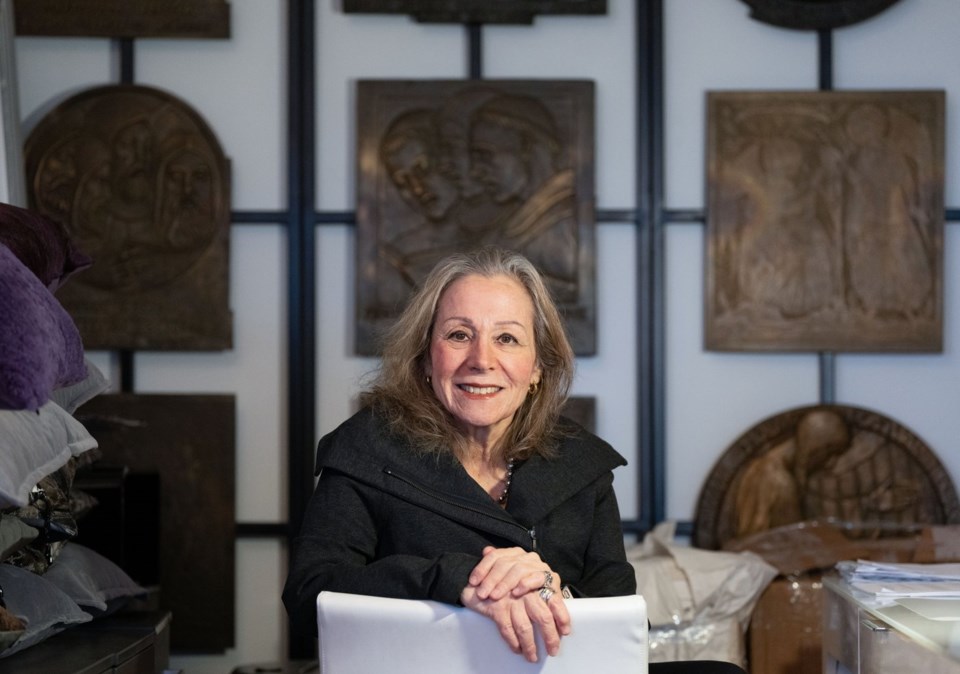Maureen Frost was guiding a client through an estate sale in Richmond, B.C., a few years ago when she came across a pair of dishes.
“We had two small, what looked like soy sauce bowls,” recalled the founder of West Coast Downsizing Solution. “We knew they were old, they were antique.
“We started the bidding at 50 cents. They wound up selling for $6,000.”
The discovery of lucrative gems amid a lifetime’s worth of clutter speaks to the profitable surprises an estate sale can bring.
Nonetheless, for Canadians who are downsizing or dealing with the death of a loved one, selling off the bulk of their belongings carries an array of challenges, from time constraints to the emotional toll. Those considering an estate sale can get through it by following a step-by-step process, heeding professional advice and ultimately being willing to say goodbye.
The first choice is whether to hold a sale at all.
If residents plan to keep at least half of their possessions, it isn’t warranted, said Frost, since they likely want to hold on to the more valuable ones.
The second choice is whether to hire pros or do it yourself. Going solo gives the seller more control and all of the revenue as most firms take a cut of between 20 per cent and 30 per cent.
Going the DIY route involves a lot more work, from sorting every item to disposing unsold leftovers.
It also means having as many as several hundred would-be buyers walking through your home or, for an online auction, photographing each item, posting it, advertising and greeting the buyers at the door.
The experience of estate sale companies — often headed by certified appraisers — can yield profits that outweigh the cost of the service.
“For example, a client wanted to throw away a vase. What she thought someone would not buy was a rare Daum cameo glass vase from Nancy, France, made in the late 1800s that brought in $2,100 through online auction,” said Adriana Sterpin, who runs Estate Sales Ontario.
“An overlooked painting that was found under blankets was a Ralph Wallace Burton, who was a frequent painter and friend of A.Y. Jackson from the renowned Group of Seven.”
Among the tougher choices is deciding what to keep and what to sell. Items up for grabs might need a quick clean or repair — if it’s easy — before going on display.
Even personal hygiene and cleaning supplies can go on the auction block. “Maybe a half-bottle of mouthwash … face soap, dishwasher liquid, we gather all of that,” said Frost.
After inventory comes pricing, which might be lower than you assume.
“We all think our possessions are worth more than they are,” said Frost.
Items once in vogue may carry less interest for younger generations.
“They don’t have homes big enough to have a hutch, and they don’t collect the beautiful ornaments,” she said of millennials and gen Z.
“So if somebody paid $150 for a Royal Doulton figurine 20, 30 years ago, they may only get $35 at the auction now,” she said, referring to statuettes made by the 209-year-old English ceramics company.
Wooden cabinets, dressers and tables might be sold at one-fifth the original price, said Ronda Bly, who owns an eponymous estate sale and appraisals firm in Montreal.
“Now it’s called ‘brown furniture,’” she said. “They want the modern stuff — leather or glass or Lucite or marble."
Sellers put tags on their items — dishware, glasses and cups are typically sold in clusters, but most other wares are offered individually — with as much detail as possible.
“Sometimes it takes two to three days to set up, which includes research for pricing,” said Bly, who holds sales at the home itself rather than via online auctions.
For their online auctions, Frost and her team photograph the model number for electronics, the maker’s mark for dinnerware and, with paintings, zoom in on the name and provide extra info.
Sellers might consider taking more high-priced items, such as some artwork or silverware, to a private dealer or auction house for broader market access.
Promotions come next. Sellers can opt for flyers and newspaper ads along with digital options — estate sale websites, online forums and classified sites such as Craigslist.
Advertising with a professional company that has email lists with clients across the continent can provide much greater reach, even though most buyers are local.
On the sale day or weekend itself, the seller is typically not in the home, similar to real estate showings.
Bly recommends removing all valuable possessions that aren’t for sale.
“Put it in your bank, your safety deposit box. Leave it with your mother, sister, brother,” she said. Once, years ago, “somebody who knew about it was able to go in and get all the jewelry” from a hidden safe.
For reasons of both security and privacy, an online auction might be preferred.
“You can have 500, 600 people going through your home in a day,” said Sterpin. “It’s very invasive.”
After online sales, buyers arrive at the property where an estate sale team helps match them with their items, make payments and haul the stuff out to the curb.
After a sale, leftover items can be taken by the estate sale company on consignment, donated or, as a last resort, sent to the dump.
The biggest challenge, however, is often the emotional one.
“You’re dealing with family members that are very upset,” Frost said of some clients. The majority are downsizing or moving into a retirement home, while others are processing the recent loss of a loved one.
“Most of them don’t want to give up their home. Everything’s got a memory attached to it. It’s not about the money for the item; it’s about who gave it to them, or the dining room that every year family and friends sat around.”
This report by The Canadian Press was first published Dec. 19, 2024.
Christopher Reynolds, The Canadian Press




